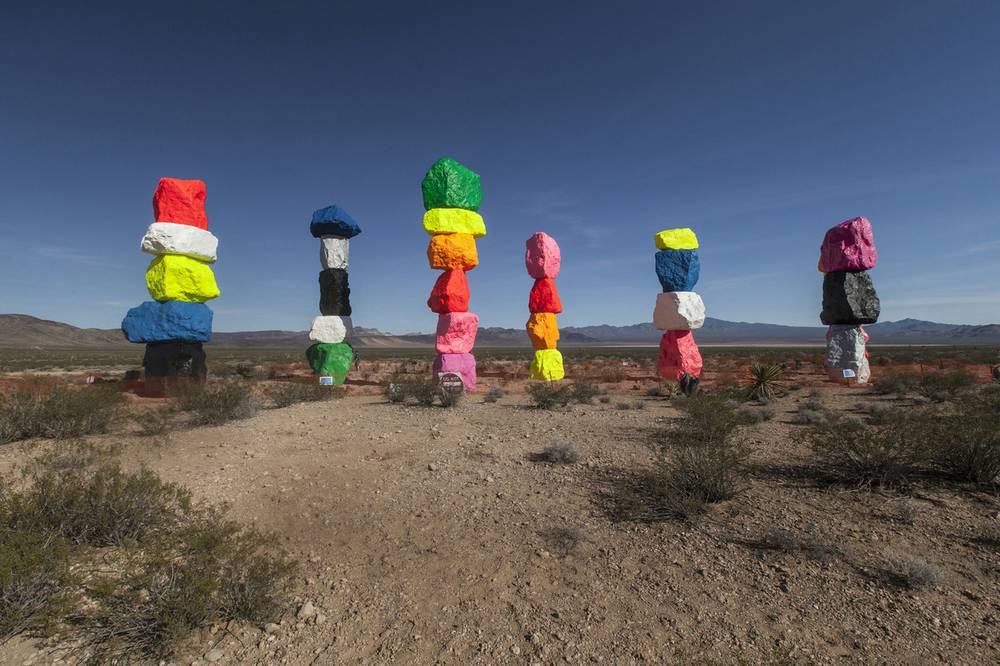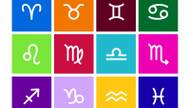Fields of creosote, wild and free, spread through the vast landscape. On the first May Sunday after the rains, the ATVers are out. Hikers are roaming the desert.
Further down the road at a barbed-wire fence, an older couple from California stares silently at the blazingly Day-Glo monument of 30- to 35-foot totems, unsure. At the base of the boulder stacks, phone-toting picture-takers marvel at the site that pulled them off the interstate.
The strange phenomenon is less the art before them—a site-specific land installation just outside Las Vegas near Jean Dry Lake, co-produced by the Nevada Museum of Art and New York City’s Art Production Fund—and more the response. The open expressions of mystification, contemplation and wonderment. The joy and excited cries of, “I’ve never seen anything like it.”
Some have criticized Ugo Rondinone’s “Seven Magic Mountains,” saying that as an art piece, it doesn’t work. It’s too much of the thing itself, in both its reverence for and critique of Las Vegas’ way of imitating reality. Others describe it as a spiritual experience that uses elements of the land to push visitors to reflect on the surrounding landscape and consider the idea of Vegas, once a tiny neon town created by a railroad, away from the constraints of the rest of America.
The desert already ushers in that serenity. The primitive-style monument of local boulders painted bright pink, red, yellow and other impure tones buried within the rainbow spectrum adds another context. So does a sign planted at the nearby railroad tracks, reading “The Last Spike” and marking the spot where the track construction crews—one coming west from Salt Lake City, the other east from LA—met on January 30, 1905. The artist wanted this alignment. Without Las Vegas, Rondinone’s monument wouldn’t be here. Without the railroad, Las Vegas might not.
Long-haul trucks move along on the freeway, as do cars and more cars. I-15 is like a river, and an expected 19 million vehicles will pass the installation during its two years in the desert before it gets spirited away without a trace. The colors, even at dusk, are electric. In the dark it’s almost Bedrock, blending in with the atmosphere but sculpturally visible.
A friend and I sleep there overnight, in the parking lot, something that’s absolutely prohibited. We do it because museums close at day’s end, and works contained within the austere galleries live in a world of controlled lighting. Here, we saw one respond to the changing hues of day and night, a rare honesty for something celebrating the real and unreal in an unimaginable place.








